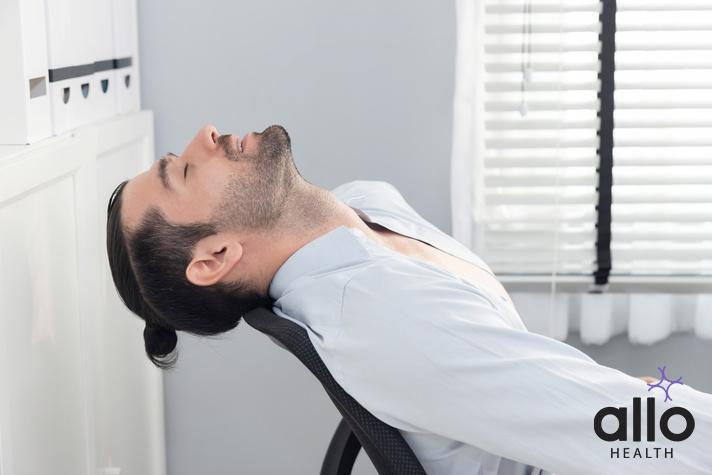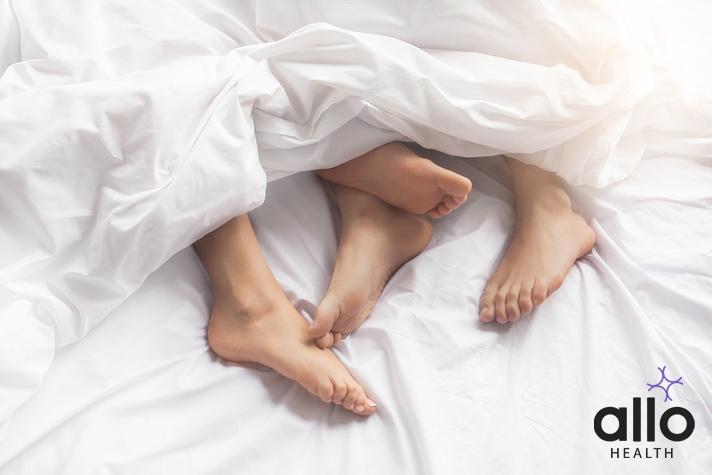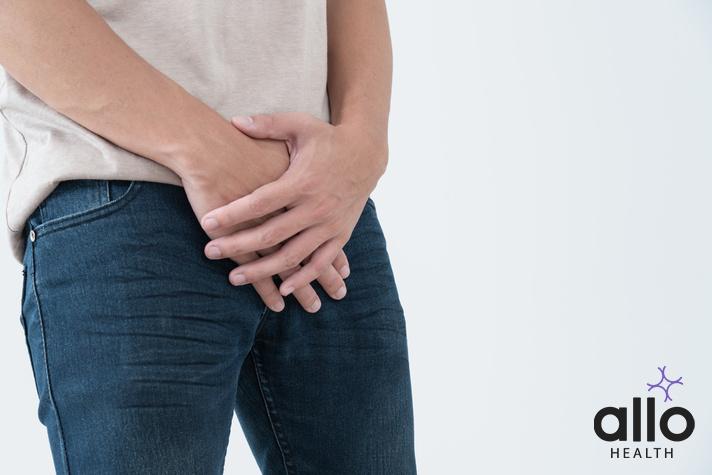4 Signs of Male Arousal: Physical and Emotional Indicators

Allo Health is dedicated to personalized well-being, offering support and trusted information tailored to individual health goals. The platform emphasizes human-generated content, led by a distinguished medical team of experts, including physicians and sexual health specialists. Their commitment to credibility involves rigorous fact-checking, authoritative research, and continuous updates to ensure accurate, up-to-date information. Allo Health's unique approach goes beyond conventional platforms, providing expert-led insights and a continuous commitment to excellence, with user feedback playing a crucial role in shaping the platform's authoritative voice.

Dr. Aditi completed her undergraduate medical education at AJIMS, Mangalore, after which she worked in multi-speciality hospitals with COVID patients and in the Pain and Palliative medicine department. Driven by her experiences, she developed a keen interest in psychiatry. Dr. Aditi believes that mental health is just as, if not more important, than physical health.
Why This Was Upated?
Our experts continually monitor the health and wellness space, and we update our articles when new information became available.
Updated on 26 February, 2024
- Article was updated as part of our commitment to diversity, equity, and inclusion.

"The following blog article provides general information and insights on various topics. However, it is important to note that the information presented is not intended as professional advice in any specific field or area. The content of this blog is for general educational and informational purposes only.
Book consultation
The content should not be interpreted as endorsement, recommendation, or guarantee of any product, service, or information mentioned. Readers are solely responsible for the decisions and actions they take based on the information provided in this blog. It is essential to exercise individual judgment, critical thinking, and personal responsibility when applying or implementing any information or suggestions discussed in the blog."
Male arousal is a complex phenomenon that encompasses both physical and emotional responses. In this article, we will delve into the various signs of male arousal, exploring both the obvious and subtle indicators that may help individuals and health professionals gain a deeper understanding of this essential aspect of human sexuality.
What is Male Arousal?
- Male arousal refers to the physiological and psychological response that occurs when a man becomes sexually excited and stimulated.
- This process involves a combination of physical and emotional factors, including heightened blood flow, deep breaths, and changes in breathing patterns, all of which are indicative of arousal.
- Sexual attraction, desire, and emotional connection with a partner play essential roles in initiating and intensifying arousal, often accompanied by maintaining eye contact and initiating physical contact.
- Hormonal factors, such as testosterone levels, influence sex drive and contribute to the overall experience of arousal. Distinct phases in the sexual response cycle, including the plateau phase and climax stage, mark the progression of arousal and lead to body orgasms.
- However, it’s crucial to recognize that arousal can manifest differently in individuals, from obvious signs like physical reactions to more subtle cues in body language and the sexual vibe.
- Understanding male arousal is essential for a healthy and satisfying sex life, though disorders of orgasm and changes in sex drive may require attention, including testosterone replacement therapy or medical intervention from health professionals.
How Arousal Happens in Men?
Arousal in men is a complex process involving both physical and psychological elements.
- Sexual Attraction: Arousal often begins with a feeling of sexual attraction towards another person.
- Hormonal Triggers: The brain releases hormones like testosterone, which play a critical role in boosting sex drive and arousal.
- Blood Flow to Genital: Increased blood flow to the genital area occurs, leading to an erection.
- Emotional Connection: Emotional factors, such as a strong emotional connection with a partner, can intensify arousal.
- Psychological Excitement: Mental stimulation, fantasies, and anticipation contribute to the psychological aspect of arousal.
- Physical Reactions: Men may experience physical reactions like elevated heart rate, deep breathing, and muscle tension during arousal.
- Touch and Stimulation: Physical contact and sexual stimulation further enhance arousal.
- Climax: The peak of arousal culminates in orgasm and ejaculation, followed by a resolution phase.
- Refractory Period: After ejaculation, men usually experience a refractory period before they can become aroused again.
- Individual Variations: Arousal can vary greatly between individuals and can be influenced by health, stress, relationship dynamics, and more.
Factors Influencing Male Arousal
Factors influencing male arousal include both physical and emotional aspects. These factors play a crucial role in a man’s sexual experiences and desire for intimacy.
- Hormonal Balance: Testosterone levels, a key sex hormone, greatly influence a man’s sex drive and arousal. Testosterone replacement therapy can impact these levels.
- Physical Responses: Arousal is marked by increased blood flow, resulting in elevated blood pressure. Certain blood pressure medications may affect this response, while deep breaths and breathing patterns may indicate excitement.
- Emotional Connection: Building an emotional connection with a partner is a significant factor in male arousal. Compliments, genuine expressions of attraction, and deep attraction play a crucial role in emotional responses.
- Sexual Attraction: Arousal often begins with a strong sexual attraction to another person, leading to desires and a heightened sex drive.
- Stimuli and Sensory Input: External factors such as visual cues, sexy vibes, eye contact, and physical touch can trigger arousal. These stimuli can vary greatly from person to person.
- Sexual Excitement and Anticipation: Men may experience arousal at different times during the day, driven by sexual excitement and anticipation for future sexual experiences.
- Orgasmic Disorders: Premature ejaculation and disorders of orgasm can impact the timing and quality of arousal and climax, requiring specific attention.
Male arousal is a complex process influenced by a range of factors, including hormonal balance, emotional connection, external stimuli, and physiological responses. Understanding these elements can contribute to a healthier and more fulfilling sex life.
Major Signs of Male Arousal

Physical Signs:
- Erection: Increased blood flow to the genital area, causing erection.
- Breathing Patterns: Deep breaths and altered breathing rate during arousal.
- Orgasms: Intense bodily sensations during climax.
- Rise in Blood Pressure: Elevated blood pressure due to heightened excitement.
Emotional Signs:
- Sexual Attraction: Strong attraction to a person, initiating arousal.
- Desire in Sex: Heightened sex drive and sexual desires.
- Emotional Connection: Building a deeper emotional connection with a partner.
Behavioral Signs:
- Eye Contact: Maintaining eye contact to express interest and arousal.
- Physical Contact: Initiating physical touch, from caresses to passionate gestures.
- Compliments in Return: Offering compliments as a sign of attraction and desire.
Subtle Signs:
- Body Language: Subtle changes in body language, like mirroring movements.
- Multiple Arousal: Arousal can occur many times per day, not just during sex.
- Sexy Vibes: Emitting a magnetic, non-verbal sexy vibe to others.
Understanding these signs of arousal and their interplay within the sexual response cycle can lead to more satisfying sexual experiences and may be relevant in cases where health professionals are involved, such as when addressing issues like premature ejaculation or hormonal imbalances.
Complications Due to Male Arousal

Male arousal, while a natural and essential aspect of human sexuality, can sometimes lead to complications and issues that may affect an individual’s sexual health and overall well-being. Here are some potential complications associated with male arousal:
- Premature Ejaculation: A common issue during arousal, premature ejaculation can lead to sexual dissatisfaction and frustration, affecting both partners. It may be linked to heightened sexual excitement and emotional responses.
- Disorders of Orgasm: Some men may experience difficulties in reaching orgasm or may have distinct orgasms during different phases of sexual activity, which can impact the overall sexual experience.
- Blood Pressure Rise: Arousal can trigger an increase in blood pressure, particularly during intense moments of excitement. This may be a concern for individuals on blood pressure medications, which can interfere with their ability to achieve and maintain an erection.
- Testosterone Imbalances: Abnormalities in testosterone levels, a key hormone for arousal and sex drive, can lead to a decrease in sex drive or sexual dysfunction. Testosterone replacement therapy may be required to address these imbalances.
- Emotional Responses: Emotional connections and responses during arousal are crucial for a satisfying sexual experience. However, issues like performance anxiety or a decrease in sex drive can affect the emotional connection between partners.
- Sexual Disorders: Persistent arousal disorders, where a person experiences excessive and uncontrollable sexual arousal, can be disruptive and distressing. These disorders may require consultation with health professionals.
While male arousal is a natural and healthy part of sexuality, complications can arise that affect sexual pleasure and overall well-being. Addressing these complications may involve medical intervention, therapy, or lifestyle adjustments to ensure a fulfilling and satisfying sexual life.
Ways to Maintain Healthy Male Arousal
Maintaining healthy male arousal is crucial for overall well-being and to prevent complications. Here are some key strategies:
- Regular Physical Activity: Engaging in regular exercise helps regulate testosterone levels, improves blood flow, and enhances sexual vibes.
- Balanced Diet: A nutritious diet supports proper hormone function. Foods rich in zinc and omega-3 fatty acids can promote healthy sex hormones.
- Stress Management: High stress levels can decrease sex drive. Deep breaths, breathing exercises, and relaxation techniques can alleviate stress and anxiety, positively affecting breathing patterns during sex.
- Adequate Sleep: Quality sleep is essential for hormonal balance, including testosterone production. Sleep also aids in emotional responses, maintaining a healthy emotional connection during sexual experiences.
- Limiting Medications: Be aware of blood pressure medications that may affect blood pressure regulation and arousal. Consult a healthcare professional if you experience any adverse effects.
- Communication: Open communication with a partner fosters an emotional connection. Frequent compliments and a deep attraction can enhance sexual excitement.
- Safe Sexual Practices: Practicing safe sex helps prevent sexually transmitted infections, ensuring a healthier sex life and preventing complications.
- Testosterone Replacement Therapy (If Needed): For individuals with low testosterone levels, testosterone replacement therapy, under the guidance of health professionals, may be considered to restore healthy sex hormone levels.
- Kegel Exercises: Strengthening pelvic floor muscles through kegel exercises can improve sexual pleasure and help manage disorders of orgasm.
- Regular Check-ups: Routine health check-ups with emphasis on sexual health can detect and address any underlying issues early, ensuring a healthy sex life.
By incorporating these strategies into one’s lifestyle, men can maintain healthy male arousal, boost sexual pleasure, and reduce the risk of complications such as premature ejaculation or disorders of orgasm. Prioritizing physical and emotional well-being plays a significant role in sustaining a satisfying and fulfilling sex life throughout one’s life.
Conclusion
Understanding the signs of male arousal involves recognizing both the physical and emotional aspects of this complex phenomenon. From blood flow and breathing patterns to emotional connections and hormonal factors, arousal encompasses distinct phases and responses. By acknowledging these signs and emphasizing a healthy emotional connection, individuals and health professionals can foster satisfying and exhilarating sexual experiences throughout a person’s entire life.
Most Asked Questions
-
What are the common signs of male arousal?
Arousal in men can be recognized through increased blood flow and blood pressure, deep breaths, and body orgasms. Paying attention to changes in breathing patterns and emotional responses can also help identify arousal.
-
Can emotional factors indicate male arousal?
Yes, emotions like sexual attraction, desire, and building an emotional connection with a partner can signify arousal. Frequent compliments and maintaining eye contact are other emotional signs to look for.
-
Are there subtle signs of male arousal to watch out for?
Yes. Subtle signs include changes in body language and the sexy vibe between individuals. Arousal can occur at various times during the day and can be linked to excitement and anticipation.
-
How do hormones and health affect male arousal?
Hormones, particularly testosterone levels, play a significant role in arousal and sex drive. Imbalances in sex hormones can impact sexual function. Additionally, conditions like premature ejaculation and orgasm disorders can affect arousal and climax during sexual activity.






































